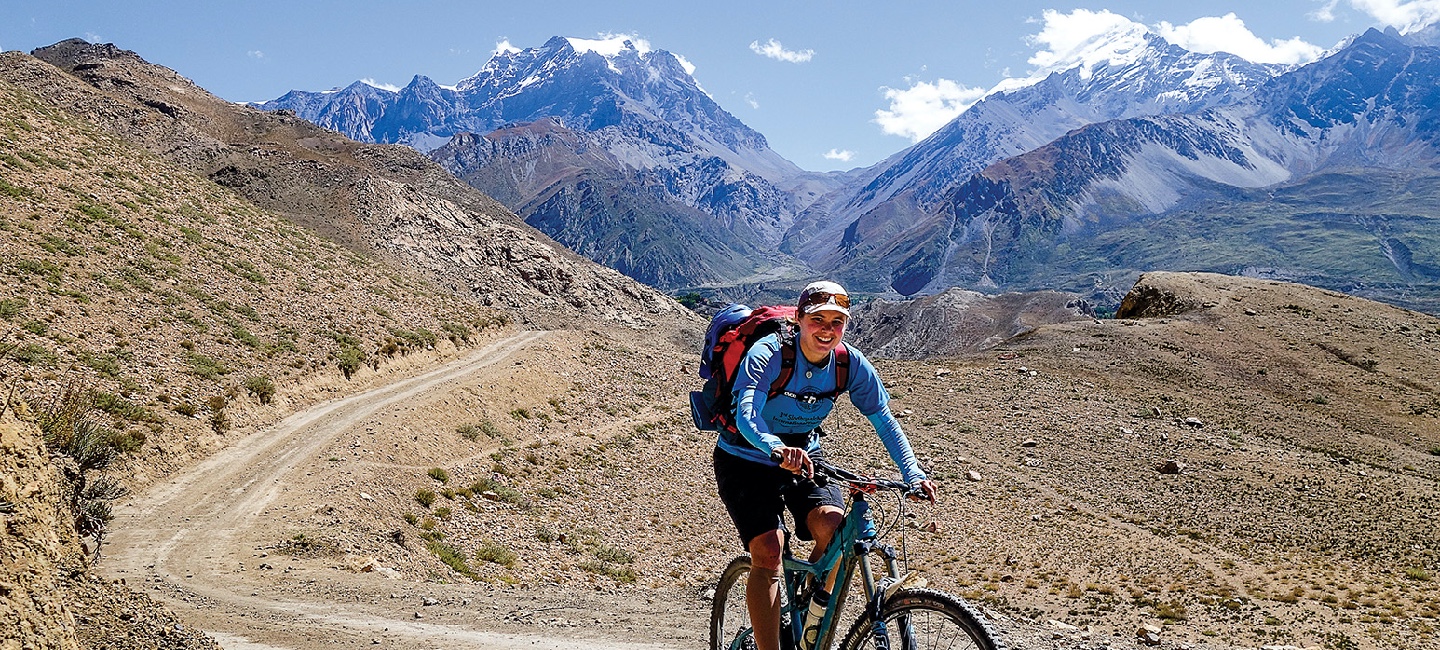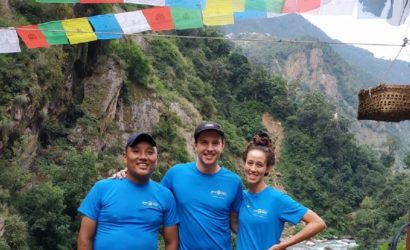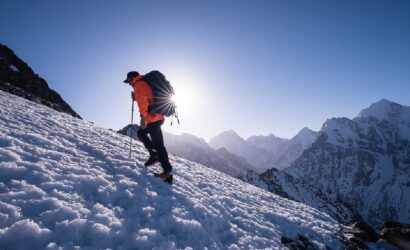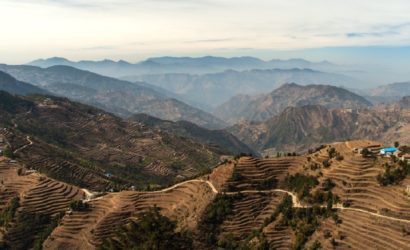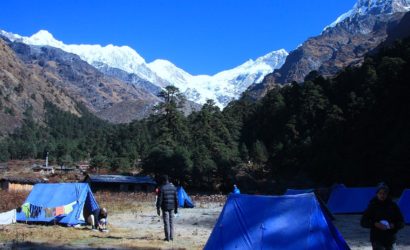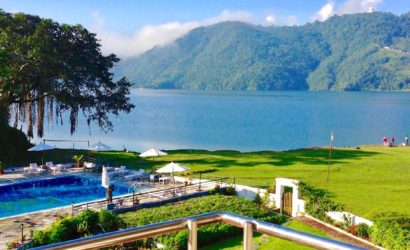Annapurna Circuit Biking Tour is an extraordinary trip that takes you to some of the most amazing and exotic biking routes in Nepal. Annapurna Circuit biking tour follows the same trail as Annapurna Circuit trekking.
The trail passes through a variety of different landscapes, from lush subtropical rainforest, deep valleys and cultivated fields, to wooded alpine and high deserts.
We visit many different villages, meeting the local hill tribes and enjoying frequent spectacular views of massive Himalayan peaks, including the Annapurnas and Manaslu.
We reach the lowland villages, dense oak forests, deep gorges and lovely isolated hamlets to the lap of the mighty high mountains and the Tilicho lake – one of the highest altitude freshwater lakes.
To top it all, the crossing of the Thorong La pass (5,416m) is a challenging ascend, surrounded by some of the most magnificent mountain sceneries in the world. We begin our mountain biking trip after a day of sightseeing in Kathmandu. First we reach Besisahar via ground transportation, from where we begin biking anti-clockwise around the Annapurna massif.
The Annapurna Circuit biking tour trail climbs gradually, allowing us to acclimatize to the high altitude, as we travel along the Marsyangdi Valley. After the crossing of the Thorong La, we descend to Muktinath, one of the most important Hindus and buddhist pilgrimage sites.
We descend down the valley reaching the Kali Gandaki River, with its panoramic views of Machhapuchhre (the “Fishtail”mountain) and Tatopani (hot spring). We finally return to Kathmandu on private transportation to celebrate our achievement.
Upon your arrival in the Kathmandu airport after completing your custom formalities Visa, etc. pick up your luggage and look for our airport representative from Himalaya Discovery, who will display your name on the board at the arrival gate.
You will be greeted by our representative and transferred to your hotel by private tourist vehicle. Overnight in Kathmandu.
Today is free for sightseeing in Kathmandu. You may wish to visit Durbar Square in the heart of the old city where the old Royal Palace, with its intricate woodcarving is located. The whole area is a maze of temples and images. Leading away from the square in all directions are narrow alleys, full of the most amazing variety of shops and stalls.
Some of these landmarks are considered World Heritage Sites including the historic Bhaktapur Durbar Square, the famous ‘Monkey Temple’ Swayambhunath and Buddhists shrine Buddhanath which is one of the largest Stupas in the world.
There will also be a full trip briefing today with gear check. In case you need to hire or buy equipment locally there will be time to do this today. Overnight in Kathmandu.
Today, you check the bikes and equipments, after which we ride due east to the medieval town of Bhaktapur, an ancient city full of Newari culture.
There are many temples and squares here that we will have time to explore. From here we head north-east to the beautiful Nagarkot hilltop on an excellent and quiet tarmac road.
Nagarkot is the best destination to acclimatize and warm up before the Annapurna Circuit biking trip. Overnight at hotel. Road Condition: Paved road 100%
We descent on Jeep tracks through the ancient village of Shanku where we will have lunch and then ride back to Thamel, Kathmandu. We lose elevation on the down hill tracks, which at some points require technical skills.
You will find yourself amidst massive stretches of farms. In fact, a considerable amount of rice and vegetables supplied to Kathmandu comes from Sankhu. Overnight in Kathmandu.
Road Condition: Off-road 55%, Paved road 45%
Early in the morning, we set off to Besisahar, which is the starting point of our biking trip. We prepare for the tour, arrange porters, equipments, and so on. Optional warm-up ride in Besisahar. Overnight at guesthouse.
The trail soon turns to rough jeep track, and follows the course of the Marshyangdi River along the right side of the valley. We ascend steeply, gaining 800m in elevation.
The first day is the perfect prelude to more thrilling riding in the days to follow. Overnight at guesthouse.
Road Condition: Off-road 30%, Paved Road 70%
After some 7km the jeep track runs out and whence it is 11km of mainly push and carrying the bike up the steep rocky trails with a final 1km descent into the flat valley surrounding Tal.
We are welcomed by marvelous sites and the remoteness of the region. Overnight at guesthouse.
Road Condition: Off-road 100% Rideable: 70%
Leaving Tal, there is a mani wall (dry stone wall inlaid with Buddhist prayer slates) in the middle of the path. These should always be passed on the left going clockwise. After going through green corn, barley and potatoes field, the valley becomes narrow again.
From Tal to Danaqu it will involve a large percent of push / carry with a very steep hard climb out of Danaqu. From here though it becomes more rideable with closer views of snow-capped peaks and a wide flowing trail to the finish.
After a hard day’s work to reach Chame, bikers can relax by the hot spring on the other side of the Marshyangdi River, enjoy baked bakery product, or even e-mail home from an internet café. Overnight at guesthouse.
Rideable: 60%
Ascend through pine forests as the trail open into a fertile agricultural valley. Rice fields and cow pastures mark a rather more hospitable stretch of terrain.
The dirt trail leads you through villages and settlements, and you get the opportunity to meet with friendly locals and snotty children. Overnight at guesthouse. Rideable: 50%
The route goes through a dense forest in a steep, narrow valley and crosses the river via two bridges, one at 2,910m and the other at 3,030m. The trail continues along the river to Pisang, where the altitude is enough to bring on the first symptoms of altitude sickness or AMS.
From Pisang, the route follows through a wide valley that opens up ahead of us. Bikers will pass through Humde (the highest commercial airport in the world) and Braga with its monastery rooted in Tibetan religion. Overnight at guesthouse. Rideable: 95%
It is necessary to spend a rest day here to acclimatize. Ascending too rapidly could have potentially fatal consequences.
There are many short excursions possible from Manang and remaining active is encouraged to aid acclimatization. Overnight at guesthouse.
Today we leave Manang through narrow, medieval-looking streets and then climb steadily up to Khusang.
Although the trail is more rideable above Khusang (3,900m), the altitude now takes effect and pedalling becomes a very hard work.
It is advised to go slowly enjoying the scenery and culture of this region. Overnight at guesthouse. Rideable 75%
We continue to ascend to higher altitude, and thus make our ride more strenuous as we reach Thorung Phedi.
It is important to remain physically and mentally prepared for the highest climb of the following day.
Take it easy and enjoy the scenery as we forsake distance for altitude. The scenery of the mighty hills surrounding you is sure to impress. Overnight at guesthouse. Rideable 50%
A 4am start is necessary to cross the Thorong-La Pass: the trail can get windy later making it difficult to cross the pass. It will take approximately 4 hours to reach the top (approx 3km) and will be 100% carry for bikers. The effects of altitude can now be fully felt.
Once at the top, the trail descends rapidly on a very steep slope (technical riding) for approximately 45 minutes to Muktinath (3,800m) and then on a less extreme gradient on fast, wide flowing trails to the valley floor, where we will be greeted by the medieval village of Kagbeni, last stop before entering Mustang. Overnight at guesthouse. Rideable: 85%
Today we will descend from snow capped peaks to tropical lowlands. Leaving Kagbeni the trail follows a wide and flat river bed leading into the cobbled streets of Jomsom, with its bustling markets and airport.
The trail then follows rough and rocky jeep tracks, descending through villages such as Marpha, and Khopang. Overnight at guesthouse. Rideable: 100%
As we descend the temperature increases and the trail becomes less rocky. From Beni the final 15km is a long an undulating track that follows the course of the river and passes through paddy fields, lined with banana plants.
Once at Khaniya Ghat we will rejoin the paved road, where a bus will be waiting for us to transfer to Pokhara (2 hours). Overnight at hotel.
We back to civilization, the place for hot showers, cold beers and great food. Pokhara is the chill out town of Nepal, strolling around the shops or perhaps some adventure is more to your liking, half day rafting trips, paragliding or sightseeing Pokahara valley, are other options to fill in your day. Overnight at hotel in Pokhara.
We depart at approximately 7.30 am for Kathmandu by tourist bus. We arrive back in Kathmandu at around 2-3.00 pm. Overnight in Kathmandu.
Today is rest and relax throughout the day. If you get interested to take some gifts from Nepal for friends and relatives, visit to some nearby shops or go out in Thamel for typical Nepalese goods.
In the evening we will have a farewell dinner in a traditional Nepalese restaurant with cultural performances. Overnight in Kathmandu.
The trip concludes, our airport representative will drop you to the airport for your flight departure from Nepal.

